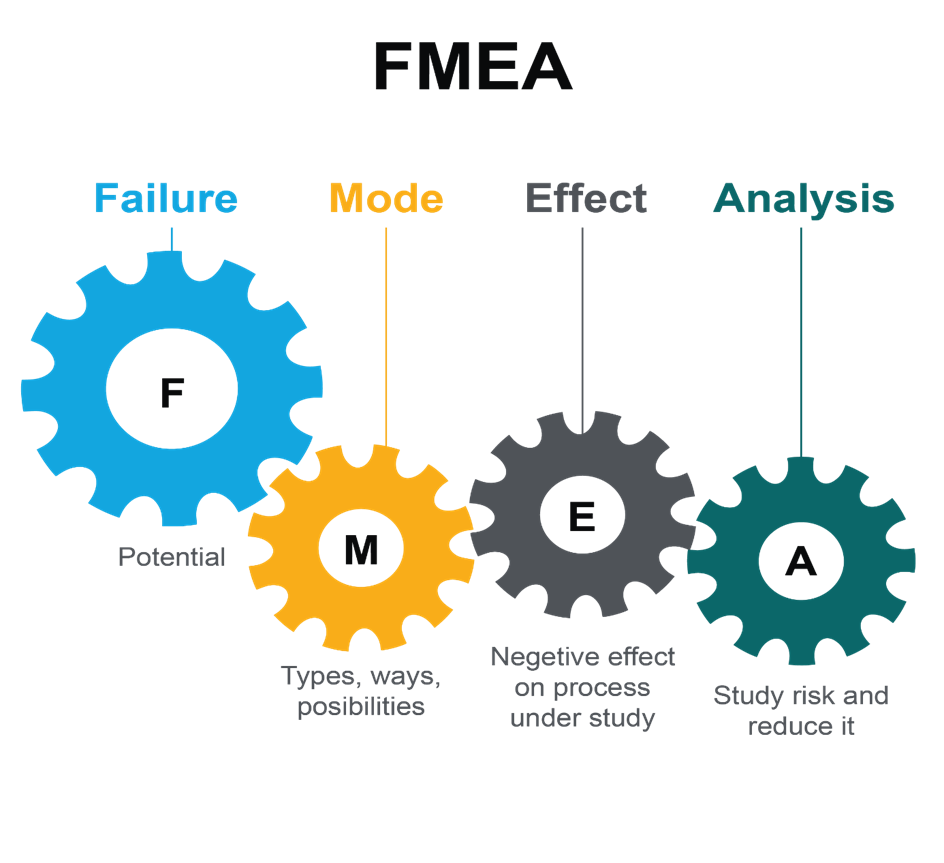Introduction:-
A failure modes and effects analysis (FMEA) is a method used in product development and operations management to analyze probable failures inside a system and classify the failures based on their severity and likelihood. A successful FMEA exercise assists a team in identifying probable failure modes based on previous experience with similar products or processes, allowing the team to design such failures out of the system with the least amount of effort and resource expenditure, lowering development time and costs.
The Ford Motor Company introduced FMEA to the automotive industry in the late 1970s for safety and regulatory reasons. It is now widely employed in a wide range of industries, including semiconductor manufacturing, software, and healthcare.

Organizational implementation:-
The organization can implement the FMEA in a few following steps:
- Step 1: Identify potential failures and effects:
To identify all failure modes, the initial FMEA stage is to examine functional requirements and their implications. The failure modes in one component can cause failure modes in others. In technical terms, we need to list all failure modes per function, considering the ultimate effect(s) of each failure mode.
- Step 2: Determine severity:
The severity of failure consequences is defined as the seriousness of failure impacts. The usual approach is to rate failure effect severity (S) on a scale of one to ten, with one being the least severe and ten being the most severe.
- Step 3: Gauge the likelihood of occurrence:
Examine the cause(s) of each failure mode and the frequency with which failure happens. Analyze similar processes or products, as well as their recorded failure modes. In technical terms, all probable failure reasons should be recognized and documented. Failure causes often are suggestive of design flaws. The modes are again assigned ranking(O) from 1 to 10.
- Step 4: Failure detection:
Following the selection of corrective activities, their efficacy, and efficiency should be evaluated. In addition, the design should be checked, and inspection processes should be established. The controls are then inspected that prevent or detect the failures before they reach the customer.
Conclusion: –
FMEA thus helps in the elimination of failure modes, minimizes the severity of the failure, reduces the occurrence of the failure mode, and improves the detection of the failures. Software like ReliaSoft XFMEA, and Datalyzer FMEA are being used by corporations to make FMEA analysis easier and assist in the development of the product or process during its entire life cycle.
Penned by
Mr Rritayan Das




Leave a comment